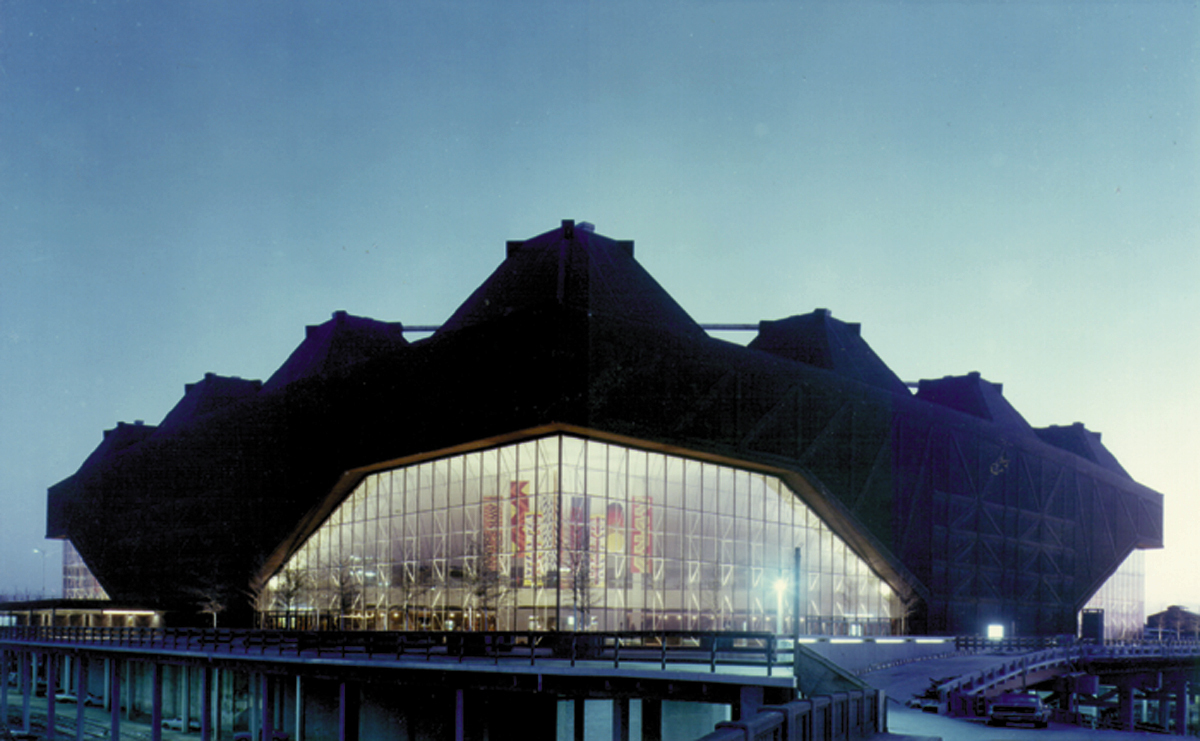An Icon of Atlanta’s Sports and Entertainment
The Omni Coliseum, often simply referred to as “The Omni,” was more than just a building; it was an Atlanta icon. From its inception in 1972 until its closure in 1997, this 377,000-square-foot multi-purpose facility was the heartbeat of Atlanta’s sports and entertainment scene. With a seating capacity of 16,500, it was a versatile venue that hosted everything from basketball games and hockey matches to concerts and political conventions. In this blog post, we’ll delve into the fascinating history, architectural marvels, and cultural significance of the Omni Coliseum, a true Atlanta staple.
Innovative Architecture of the Omni
The Omni Coliseum stood out for its cutting-edge design features. Its seating arrangement was crafted to provide excellent visibility for a variety of events. The arena’s most notable structural element was its unique roof, technically described as an ortho-quad truss system. This design became an iconic part of the Omni’s identity, often likened to an egg crate or a rusty waffle iron.
The exterior of the Omni was clad in Cor-Ten weathering steel. This material was chosen with the intention that it would rust and then form a protective seal, contributing to the building’s longevity. However, this choice had its complications, which we’ll discuss later.
A Stage for Sports and More
The Omni Coliseum was a versatile venue that served as the home ground for various sports teams and events. From 1972 until its closure in 1997, it was the home arena for the Atlanta Hawks of the NBA. It also hosted the Atlanta Flames of the NHL from 1972 until 1980.
Beyond sports, the Omni was a hub for significant events. It hosted the 1977 NCAA Division I men’s basketball tournament, the 1988 Democratic National Convention, and even the indoor volleyball competition for the 1996 Summer Olympics.
Cultural Epicenter of Atlanta
The Omni was more than just a sports venue; it was a cultural hotspot. It was a significant stage for professional wrestling, hosting events for the NWA’s Georgia Championship Wrestling, Jim Crockett Promotions, and World Championship Wrestling. The arena also saw historic wrestling events like Starrcade and the first WarGames match.
When it came to music, the Omni was Atlanta’s primary concert venue from 1972 to 1997. Iconic acts like the Grateful Dead, Madonna, and Elvis Presley graced its stage, making it a go-to destination for music lovers.
The Transition to a New Era
As times changed, so did the needs for sports and entertainment venues. The Omni Coliseum, after serving Atlanta for 25 years, made way for a new facility equipped with modern amenities. In 1997, the Omni was succeeded by the State Farm Arena, which opened its doors in 1999. This transition marked a new chapter in Atlanta’s sports and entertainment history, building on the legacy that the Omni had established.
Continuing Legacy
Though the Omni Coliseum no longer stands, its impact on Atlanta’s sports and entertainment scene is indelible. One tangible piece of its history, the scoreboard, now hangs in the pavilion of the State Farm Arena, serving as a nostalgic reminder of the Omni’s contributions. The arena set the stage for what Atlanta has become today—a bustling hub for sports, music, and culture.
A Lasting Impact on Atlanta
The Omni Coliseum may be a part of Atlanta’s past, but its influence is very much alive in the city’s present and future. From setting architectural trends to hosting unforgettable events, the Omni laid the groundwork for Atlanta’s current status as a sports and entertainment powerhouse. As we enjoy events in modern venues like the State Farm Arena, we remember the Omni Coliseum as a pioneering facility that helped shape Atlanta into the vibrant city it is today.




